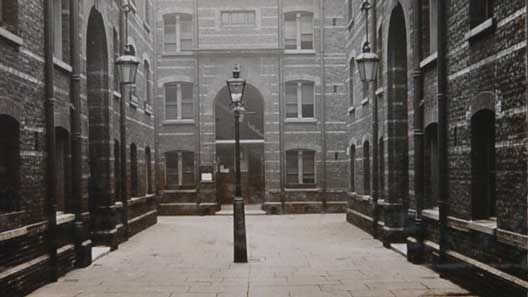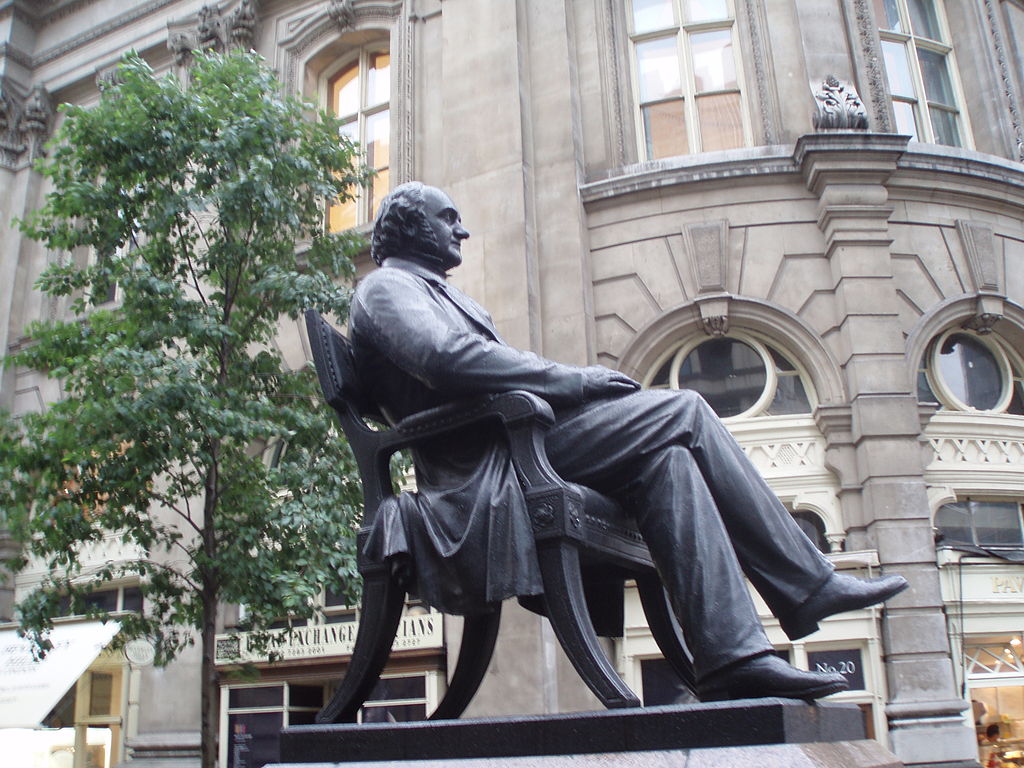I might be a long way from home for a bit longer, but, as that odd, old song goes, “there’s always something there to remind me…” of home (and good luck getting that out of your head for the rest of the day, beloved readers). It’s more than just the occasional glimpses of Red Sox hats, or that one guy on the Tube today wearing a Free Brady shirt, which gave me a hearty chuckle. It’s being in a place that not only knows how to pronounce your hometown, but why the name of your hometown is so impressive.
 If you’ve told someone from outside the metro-Boston area where you live, their first reaction is usually bafflement; apparently, the vast majority of the country would call our city Peeeee-BODY, as opposed to running all the consonants together like you’re chocking on overheated alphabet soup, as we tend to do. But here in London, George Peabody’s adoptive home, his name is pronounced correctly with ease…and it is spoken with pride.
If you’ve told someone from outside the metro-Boston area where you live, their first reaction is usually bafflement; apparently, the vast majority of the country would call our city Peeeee-BODY, as opposed to running all the consonants together like you’re chocking on overheated alphabet soup, as we tend to do. But here in London, George Peabody’s adoptive home, his name is pronounced correctly with ease…and it is spoken with pride.
As many of you might know, George Peabody was born in what is now Peabody, but visited London beginning in 1827 in order to raise capital for American engineering and infrastructure projects, finally organizing “George Peabody & Co.” and settling in London permanently a decade later. But it’s what he did after this that is truly important. Having seen the devastation, anger and resentment churned up by the Civil War, and particularly the plight of the lower classes in the South firsthand, Peabody decided to go out and change the world.
In April 1862, Peabody founded the Peabody Donation Fund, which established quality, affordable housing for the “artisans and labouring poor” of London, and the first of these buildings opened in Spitalfields in 1864. These houses were–and, frankly, still are–remarkable, because they were built on the premise that the lower classes deserved to live in a safe, clean, and modern environment, and that, in so doing, they would be more able to contribute to society in whatever way they chose to do. These houses were among the first to have electricity, elevators, and indoor plumbing in the city. They were run like a community, with classes being offered to residents about money-management, personal finances, and home care for first-time home owners. They were warm, centrally located, and within the financial reach of a number of people who would otherwise be forced to live in the slums made notorious by Dickens, or in tales of Jack the Ripper.

And do you know what? Those houses still exist today. You can read about them here, on the Peabody Housing Authority website. From that one building in Spitalfiends, Peabody’s vision has now become 31 housing estates, offering shelter, employment opportunities, and a sense of belonging to some 70,000 people. And before you start thinking if this whole sense of niceness is overblown, I am here to tell you that it isn’t. As I was walking back from the London Metropolitan Archives in Clerkenwell (an area of London very close to the financial heart of the City), I came upon the Peabody Estates of Clerkenwell, which were built in place of a slum in 1884.
As you can see, these buildings are still lovely, and still really quite affordable, all things considered. And, unlike a number of estates, they have windows, and walls thick enough to hold in heat and keep out street- and neighbor-noises. Also, for those who think this all looks a little familiar, these buildings were used in the film The Imaginarium of Dr. Parnassus, because, according to director Terry Gilliam, they offered the most quintessentially “perfect London atmosphere”. You can read a bit more about these buildings here.
Many of you may have seen photos of George Peabody’s statue in London (see below, too!). It stand near the Royal Exchange, and was unveiled by the Prince of Wales in 1869. George himself was too ill to attend, and when he died, some four months later, Queen Victoria permitted him temporary burial at Westminster Cathedral until arrangements could be made to send him to his final rest at home (for those who appreciate trivia, news of his funerals in London and Massachusetts were among the first news shared along the Transatlantic Telegraph Cables).
The statue is not only meant to commemorate Peabody’s impressive business acumen, which was considerable, but because he was, truly, the first modern philanthropist in history. The Carnegies and the Gettys and the Gates of this world may receive more public credit, but, in this lifetime, George Peabody gave over $8 million (by his contemporary financial standards) in order to benefit people he would never meet. People like him, who wanted more out of life–who wanted to learn and to create, and the chance to grow up and share what they learned with the world. The fact that his memory is still so revered, on both sides of the Atlantic speaks to how successful he was in that endeavor. And has made me pretty proud to tell people where I’m from, I can tell you that.

PS: For those of us who study the First World War, there’s a whole section on the Peabody Housing Authority’s website about Peabody and World War One. I know I’m not the only one who finds this fascinating.

